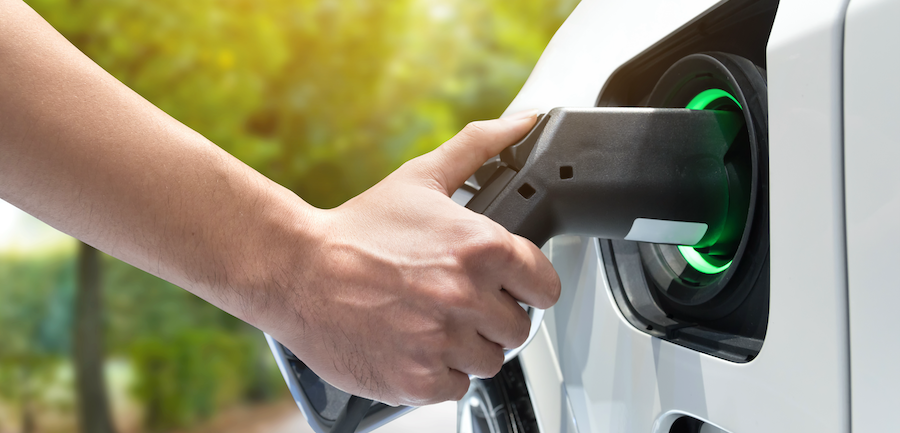
More people are charging their electric vehicles as they shop, but public EV charging will struggle to reach critical mass until certain problems get solved.
Charging your electric vehicle while you shop is becoming more and more popular. The supermarket giant Tesco recently announced that its car park charging network had completed 500,000 free charges, equivalent to ten million miles of driving. However, if charge as you shop (or eat, or watch) is going to become the norm, which is essential if we are going to reduce carbon emissions, several problems need to be addressed. There are obstacles that stand in the way of charging in public truly being a preferable option to charging at home.
Where does public EV charging currently stand? How can we get more people using them?
Public EV charging today
Achieving half a million free EV charges is undoubtedly a milestone for Tesco. It shows how it is leading the way in making public EV charging the norm.
Tesco began rolling out free EV chargers in 2018, with an aim to install 2,400 charging points at 600 supermarkets across the UK. However, at last count in July 2020, there were 402 chargers located at 200 stores. These charge stations offer 7kW or 22kW charging free of charge. Customers must pay the market rate for super-fast 50kW rapid charging. This initiative is in partnership with Volkswagen and Pod Point. Triodos Bank provides a debt facility to Pod Point to support the rollout’s funding.
According to Zap Map, there are currently just over 23,000 public EV charging stations in the UK, offering around 40,000 connecting points. As well as at supermarkets and service stations, you’ll find charging stations at shopping centres (for example, there are 24 connectors at the Westfield Centre in London and 8 at Birmingham’s Bullring), town centre car parks, even football stadiums. In some areas, there are specially adapted lampposts where drivers can plug in and charge.
Charging stations are comparatively inexpensive to install. It costs a few hundred pounds to adapt a lamppost. There is undoubtedly a move to install more chargers in more places. The industry understands the benefits. But first, some problems need to be solved.
Problems to solve
Currently, there are 500,000 electric cars on the road in the UK. It is clear that if public charging is to be a viable option, we need more charging stations at places people go. It needs to be an easier option than simply plugging in at home. If the industry could make on-the-go charging the norm, it would provide a raft of benefits.
So what’s stopping public charging from reaching critical mass. A recent article from Which identified several issues that stand in the way.
The main problem is that on-the-go charging is too complicated. You can’t just plug in and charge, not without a lot of admin first. Also, there is no UK-wide system to run public EV charging, so there are too many variables associated with it. Drivers prefer to go home and charge their batteries rather than go through all the hassle.
There are more than 30 charging networks in the UK and they all seem to have different mobile apps of varying quality. Some allow contactless payment, but most don’t. With others, you need RFID cards or keys.
There are different speeds of charging, with different costs attached. Sometimes, you pay for the time you spend charging; other times, it’s the number of kilowatt-hours. It’s difficult for drivers to find out how much they are going to pay before they charge up their vehicle.
Some points and cars use different types of plugs. Tesla has a nationwide network of charge points, but they only work with Tesla cars. It’s far too confusing, but it doesn’t have to be.
We need all parties to agree on a system that works for everyone, with a mobile app that works and is easy to understand, geared up to make it as easy as possible for the driver to plug in, charge and go.
Why it matters
It is essential to make public charging easier to access and a more viable option for drivers. Until it happens, the mass take-up of electric vehicles will never truly happen.
The average range for an electric car in the UK is 193 miles – around the distance from London to Leeds. While this is an impressive technological advance, it still means that if you have an electric car, you need to do some planning if you are going on a long journey. Do you have enough range to get to your destination? Where will you charge your battery so you can get back?
If drivers could rely on a fast, simple to use, well-run network of public charging stations dotted at various accessible points on their journey, it would make life a lot easier. It would also encourage more people to take the plunge and buy an electric car.
The public charging stations that currently exist are brilliant, especially the free charging points. Think about it; you don’t often see petrol stations giving out free petrol! But, there needs to be more and they need to be more convenient to use.
Once this happens, drivers can reap the rewards of cheaper driving, spending less on power, tax and associated driving charges. At the same time, we can all do our bit for the environment.
We hope the industry can get together and devise a way to solve these problems soon.
